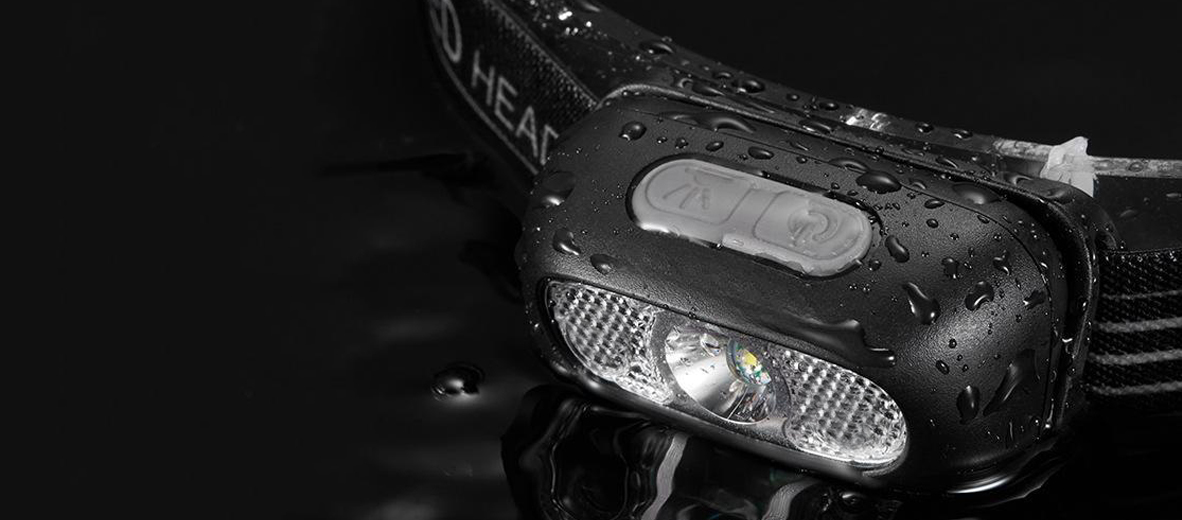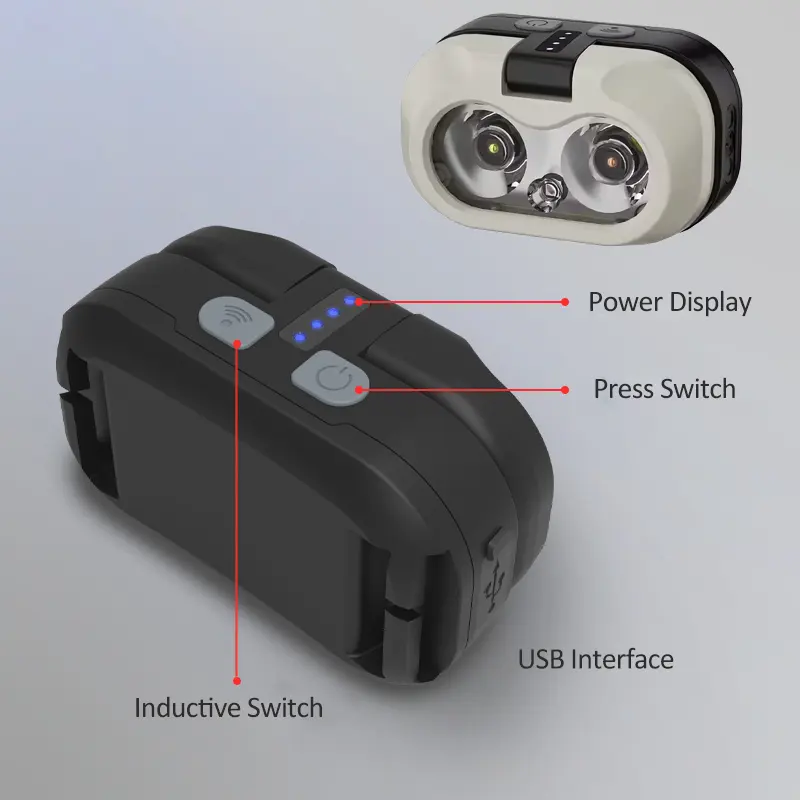Industrial workplaces demand reliable lighting solutions that enhance safety and operational efficiency. LED headlamp technology meets these challenges with advanced brightness, energy efficiency, and durability. From 2012 to 2020, cumulative energy savings from LED lighting reached 939 TWh, with annual savings averaging 103 TWh. This energy-efficient innovation reduces electricity consumption while extending product lifespan, offering significant cost benefits. Its durability ensures uninterrupted performance in harsh conditions, making it indispensable for industrial environments. By addressing critical lighting needs, LED headlamp technology has become a cornerstone of modern industrial operations.
Key Takeaways
- LED headlamps make work safer by being very bright. They also cut down glare, helping people see better in the dark.
- These lights use up to 80% less energy than old ones. This saves a lot of money on power bills.
- LED headlamps are tough and can handle rough conditions. They last longer and need fewer repairs.
- New LED headlamps have smart features like motion sensors. These make work easier and more comfortable for users.
- Industries can customize LED headlamps to fit their needs. This helps them work better and stay safe.
Key Features of LED Headlamp Technology

Advanced Brightness and Beam Control
LED headlamp technology delivers exceptional brightness and precise beam control, making it ideal for industrial applications. Its advanced lighting capabilities significantly enhance visibility in low-light environments, reducing the risk of accidents and improving operational efficiency.
- LED lighting reduces glare discomfort by 45%, ensuring a more comfortable visual experience for workers.
- Floor trip hazard detection improves by 23.7%, minimizing workplace injuries.
- High-lumen LED headlamps, often exceeding 1,000 lumens, provide extraordinary brightness with a wide beam pattern, enhancing situational awareness in complex industrial settings.
These features ensure that workers can perform tasks with greater accuracy and confidence, even in the most challenging conditions.
Energy Efficiency and Longevity
Energy efficiency and longevity are hallmarks of LED headlamp technology. These headlamps consume significantly less power than traditional lighting solutions while delivering superior illumination.
- LED headlights are more energy-efficient than halogen or HID lights, consuming up to 80% less power.
- Their long lifespan, often reaching 50,000 hours, reduces the need for frequent replacements, leading to substantial cost savings.
- LED bulbs can last up to 25 times longer than traditional lighting sources. For example, the annual energy cost for a 9-watt LED bulb is only $1.26, compared to $6.02 for a 43-watt halogen bulb.
By combining energy efficiency with durability, LED headlamps offer a sustainable and cost-effective lighting solution for industrial environments.
Rugged and Durable Design for Harsh Environments
Industrial settings often expose equipment to extreme conditions, including high temperatures, vibrations, and moisture. LED headlamp technology is designed to withstand these challenges, ensuring reliable performance in demanding environments.
In experiments, temperatures inside LED headlamps exceeded 50°C when the engine idled with lights on for extended periods. Surface temperatures reached 65°C under certain conditions. With low beams on for an hour, the internal temperature rose by 20°C, and with both beams on, an additional 5°C was recorded. Junction temperatures of LEDs approached 150°C under extreme conditions, necessitating thermal sensors to manage heat effectively.
This robust design ensures that LED headlamps maintain optimal performance, even in the harshest industrial environments. Their durability minimizes downtime and maintenance costs, making them a dependable choice for industries that demand resilience and reliability.
Benefits of LED Headlamp Technology in Industrial Applications
Improved Worker Safety and Visibility
LED headlamp technology plays a critical role in enhancing worker safety and visibility in industrial environments. Its advanced brightness and beam control features allow workers to navigate low-light areas with confidence. By reducing glare discomfort by 45%, these headlamps create a safer visual experience, minimizing eye strain during extended shifts.
High-lumen LED headlamps improve floor trip hazard detection by 23.7%, significantly reducing workplace injuries.
In industries where precision and safety are paramount, such as mining and construction, LED headlamps ensure workers can identify potential hazards quickly. Their ability to provide consistent illumination in challenging conditions makes them indispensable for maintaining safety standards.
Enhanced Productivity and Precision
LED headlamp technology contributes to operational efficiency by improving visibility and precision during tasks. Adaptive driving beam (ADB) headlamps, a notable innovation, utilize sensors to dynamically adjust the beam pattern. This feature minimizes glare while maximizing visibility, enabling workers to focus on their tasks without distractions.
| Feature | Benefit |
|---|---|
| Adaptive Driving Beam (ADB) | Reduces glare and enhances visibility |
| Dynamic Beam Adjustment | Tracks vehicles and pedestrians effectively |
These advancements allow industries to achieve higher productivity levels by reducing errors and improving task accuracy. For example, in automotive manufacturing, ADB headlamps enhance assembly line operations by providing targeted lighting that adapts to the worker’s movements. This technology ensures precision in complex tasks, ultimately boosting overall efficiency.
Cost Savings Through Energy Efficiency and Reduced Maintenance
LED headlamp technology offers substantial cost savings through its energy-efficient design and extended lifespan. By consuming up to 80% less power than traditional lighting solutions, these headlamps reduce electricity costs significantly. Their durability, often lasting up to 50,000 hours, minimizes the need for frequent replacements, lowering maintenance expenses.
| Aspect | Benefit |
|---|---|
| Energy Efficiency | Consumes less power than traditional lights |
| Maintenance Savings | Requires less frequent replacements |
| Lifespan | Longer lifespan contributes to cost savings |
Industries benefit from these savings by reallocating resources to other critical areas. For instance, the annual energy cost for a 9-watt LED bulb is only $1.26, compared to $6.02 for a 43-watt halogen bulb. This efficiency not only reduces operational costs but also supports sustainability goals by lowering overall energy consumption.
Recent Innovations in LED Headlamp Technology

Smart Features for Industrial Use
Recent advancements in LED headlamp technology have introduced smart features tailored for industrial applications. These innovations include motion sensors and programmable beam patterns, which enhance user comfort and operational efficiency. Smart headlamps now integrate camera and sensing systems to monitor the environment, improving safety and performance in industrial settings. Adaptive headlight systems, for instance, adjust illumination based on vehicle dynamics like speed and steering, ensuring optimal visibility.
Rigorous testing and measurement standards ensure these smart features meet regulatory requirements, making them reliable for demanding industrial environments. Advanced evaluation methods, such as imaging colorimeters, allow manufacturers to assess and refine headlamp performance effectively.
Customization for Specific Industrial Needs
Customization has become a cornerstone of modern LED headlamp technology, enabling industries to address unique operational challenges. Recent studies highlight the use of 3D printing to produce headlight lenses, offering flexibility and reducing costs compared to traditional manufacturing methods. Companies like Nichia Corporation lead the way by developing specialized solutions that deliver high-intensity illumination, enhancing safety and efficiency.
| Sector | Key Customization Features |
|---|---|
| Industrial and Manufacturing | High brightness, adjustable beam angles, long battery life, safety features like reflective bands. |
| Emergency and Safety Services | Robust construction, waterproof capabilities, strong beam throw, compliance with safety regulations. |
| Mining and Exploration | Explosion-proof features, long battery life, adjustable brightness, impact-resistant materials. |
| Automotive | Portable design, magnetic bases, adjustable beam angles, multiple light modes, user-friendly controls. |
These tailored solutions ensure that LED headlamps meet the specific demands of various industries, from mining to automotive manufacturing.
Integration with IoT and Wearable Technology
The integration of LED headlamp technology with IoT and wearable devices represents a significant leap forward. IoT-enabled headlamps can connect to centralized systems, allowing real-time monitoring and control. This connectivity enhances operational efficiency by providing data on usage patterns and maintenance needs. Wearable technology, such as helmets with built-in LED headlamps, offers hands-free lighting solutions, improving worker mobility and safety.
These innovations demonstrate the potential of LED headlamp technology to transform industrial operations, making them safer, more efficient, and highly adaptable to future challenges.
How to Choose the Right LED Headlamp for Your Industry

Key Factors to Consider
Selecting the right LED headlamp for industrial applications requires careful evaluation of several critical factors. These considerations ensure the headlamp meets the specific demands of the work environment while maximizing efficiency and safety.
- Intended Use: Determine whether the headlamp will be used for work-related tasks or leisure activities. Industrial applications often require higher durability and brightness levels.
- Performance Standards: Evaluate the headlamp’s performance indicators based on ANSI standards to ensure reliability and compliance.
- Brightness: Choose a headlamp with high lumens (300–700) for detailed tasks in dark environments.
- Beam Pattern: Select flood beams for illuminating large areas or spot beams for precision-focused tasks.
- Battery Life: Ensure the runtime aligns with the duration of typical work sessions to avoid interruptions.
- Durability: Look for features like IP ratings, which indicate resistance to dust and water, and robust construction to withstand impacts.
- Comfort: Opt for adjustable headbands, breathable materials, and lightweight designs for extended wear.
- Additional Features: Explore options like motion sensors for hands-free operation and red light modes for preserving night vision.
Tip: Industrial environments often demand headlamps with rugged designs and long-lasting batteries. Prioritize models that combine durability with advanced features to enhance worker productivity and safety.
LED headlamp technology continues to transform industrial operations by addressing critical challenges in safety, efficiency, and cost-effectiveness. Industries such as construction, manufacturing, and automotive repair benefit from hands-free lighting solutions that enhance worker productivity in low-light conditions. The industrial segment leads the headlamp market in revenue, driven by advancements in brighter and energy-efficient options. These innovations not only improve operational safety but also reduce long-term costs, making LED headlamp technology an indispensable asset for modern industries.
FAQ
What makes LED headlamps suitable for industrial environments?
LED headlamps excel in industrial settings due to their durability, energy efficiency, and high brightness. They withstand harsh conditions like extreme temperatures, vibrations, and moisture, ensuring reliable performance. Their long lifespan and low maintenance requirements make them cost-effective for demanding applications.
How do LED headlamps improve worker safety?
LED headlamps enhance safety by providing consistent, high-quality illumination. Their advanced beam control reduces glare and improves visibility in low-light conditions. Workers can identify hazards more effectively, minimizing accidents and injuries in industrial environments.
Are LED headlamps compatible with IoT systems?
Yes, many modern LED headlamps integrate with IoT systems. These smart headlamps enable real-time monitoring and control, offering features like motion sensors and usage tracking. This connectivity improves operational efficiency and supports predictive maintenance.
What factors should industries consider when selecting LED headlamps?
Industries should evaluate brightness, beam pattern, battery life, and durability. Features like adjustable headbands, IP ratings for water and dust resistance, and motion sensors enhance usability. Selecting headlamps tailored to specific tasks ensures optimal performance.
Can LED headlamps be customized for specific industries?
Yes, LED headlamps can be customized to meet unique industrial needs. For example, mining headlamps may include explosion-proof designs, while automotive headlamps may feature adjustable beam angles. Customization ensures the headlamps align with operational requirements.
Post time: Apr-27-2025
 fannie@nbtorch.com
fannie@nbtorch.com +0086-0574-28909873
+0086-0574-28909873





